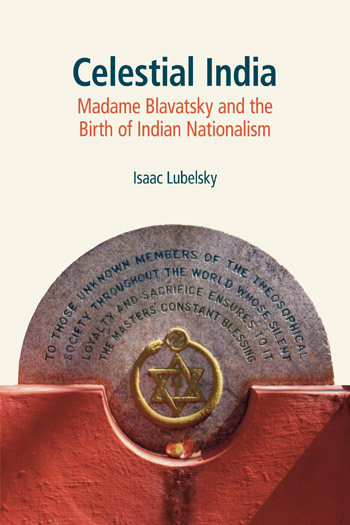
This review first appeared on the Bulletin Blog
Reviewed by Andrew Kunze
Michael Altman’s Heathen, Hindoo, Hindu turns a critical eye toward history of Hinduism in America and the nationalist, orientalist discourses of formative debates, from the Colonial era up to Chicago’s World Parliament, in order to revise the standard “Transcendentalist-Theosophist-Vivekananda-1965” trajectory (xvii). Taking a genealogical approach to his historical sources, Altman shows how ‘hazy notions’ of Indian religion variously served as discursive foils and straw-men against white, Protestant American identity. When these Americans talked about religion in India, Altman argues, they were really “talking about themselves” (xxi) and constituting their own racial, national, and religious identities (140).
Altman first unpacks the religious cargo of three loaded terms—Heathen, Gentoo, Hindoo. First, Cotton Mather dismisses of all forms of ‘Heathen’ religion in 1721 (1); by 1784 Hannah Adams’ ‘liberal’ account aspires for a more ‘impartial’ description of, what she called, the ‘most tolerant’ religion of ‘Gentoos’ (16); and in 1811 Claudius Buchanan’s ‘evangelical’ representation portrays ‘Hindoo’ religion as violent and superstitious (30–1). With several such ‘evangelical’ accounts, Altman demonstrates that missionary organizations “used representations of Hindoo depravity to foster support for the missions and to increase their institutional strength” (38).
Altman then lays bare the racial and religious hierarchies of American national culture in the mid-eighteenth century, with two main sets of sources: Geography schoolbooks and stories from Harper’s magazine. In many regards, these publications reified the national identity of white, Protestant America by rejecting its foil in India: its ‘half-civilized’ caste system, its treatment of women as ‘slaves,’ and its ‘false’ religion (53). This chapter contains one of Altman’s most important contributions—he expands our view beyond elite religious circles and gives us a glimpse of more wide-spread American representations of Hinduism during this period.
Next, Altman adds nuance to our understanding of the Transcendentalist writers and their complicated appreciation for Indian religion. Emerson maintained a belief in the superiority of the Western mind and essentialized the oriental other, but unlike the preceding racial hierarchies, he sought a balance between Eastern and Western thought, instead of outright Western dominance (78). Both Emerson and Thoreau were guilty of essentializing Indian religion and the ‘Eastern mind.’ In their ‘liberal’ publications, like The Dial and The Atlantic, Transcendentalists attempted to ‘universalize’ and decontextualized Sanskrit texts (90) and portrayed Indian civilization through narratives of decline (94).
Chapter five portrays the Theosophical Society as the mystical cousins of their Transcendental peers, and Altman brilliantly shows their orientalist assumptions suddenly challenged by contact with the Arya Samaj of Swami Dayananda Saraswati. For Blavatsky, “[t]he wisdom religion derived from India […] did not belong to Hindus” (107). Little surprise, then, that the Theosophical Society’s 1878 merger with the Arya Samaj was short lived. After a personal meeting with Dayananda Saraswati in 1880, the Theosophists agreed to separate the two organizations, and mutual public denunciations quickly followed (109). Saraswati derided Blavatsky as an atheist and a huckster, while Theosophists criticized the Arya Samaj as sectarian, dogmatic, and exclusivist (109). These voices of Indian resistance become all the more important as the book sets up its 1893 conclusion in Chicago.
It’s hard to say something new about the Parliament of World Religions, but his work in the preceding five chapters helps Altman paint a critical, Masuzawa-inspired portrait. Some ‘liberal’ organizers hoped the event would unite religious peoples in their pursuit of higher ideals (122), and other ‘evangelicals’ saw the Parliament as forum to assert Christian (and mostly Protestant) supremacy (123). Stepping into the Protestant debate, two Hindu speakers—Protap Chunder Mozoomdar and Swami Vivekananda—elicited two distinct responses. Representing the Brahmo Samaj, Mozoomdar described his ‘religion,’ and Unitarians happily claimed him as their own (131). By contrast, Vivekananda not only defended Hindu practice, but also chastised the Parliament’s organizers and the Christian West for its religious intolerance and imperial violence (133–34). His fiery critique, as well as his polished English diction, made Swami Vivekananda an instant celebrity in Chicago and around the US.
This book promises to become an important resource for studies of American Hinduism, American history, and religious studies. Packed with fascinating sources and incisive analysis, each chapter flies by in a quick 20 pages. I can mention only two small critiques, both of which are unpacked in the forthcoming print version of this review. First, the text’s liberal-vs.-evangelical framework might be occasionally overplayed in a way that suggests every religious actor of this period fits neatly into one or the other category. This excludes liberal, evangelical abolitionists like Henry Ward Beecher, or even Charles Grandison Finney. Second, the text omits Protap Chunder Mozoomdar’s 1883 tour of the US, when he spoke at many Unitarian churches, and newspapers debated his religious identity, a full decade before the Chicago Parliament. These quibbles aside, Heathen, Hindoo, Hindu is an excellent history, which will help readers see the nineteenth century precedent for our contemporary politics of Hindu representation. Altman’s critical historical analysis will help both undergraduate and graduate students see the American embrace of Vivekananda in stark new light, and his powerful historical sources will drive home the nationalist and orientalist forces behind many a debate on ‘religion.’
Andrew Kunze is a fourth year PhD student in Anthropology of Religion at the University of Chicago Divinity School. He studies the Hindu diaspora, and the ways new mass media affect contemporary Hindu practice. His research focuses on American Hindu communities and their connections with Indian religious institutions.









